Daragh Ó Conchúir is an award-winning freelance writer, author and broadcaster, who has been contributing to mainstream and trade media for more than 30 years, while also serving in editorial roles in that time, including at present, as editor of the Irish Racing Yearbook.
Capital gains from taking risks
Daragh Ó Conchúir discovers how Ger O’Neill and Darragh McCarthy’s decision to set up a new stallion stud during the Covid Lockdown has paid off.
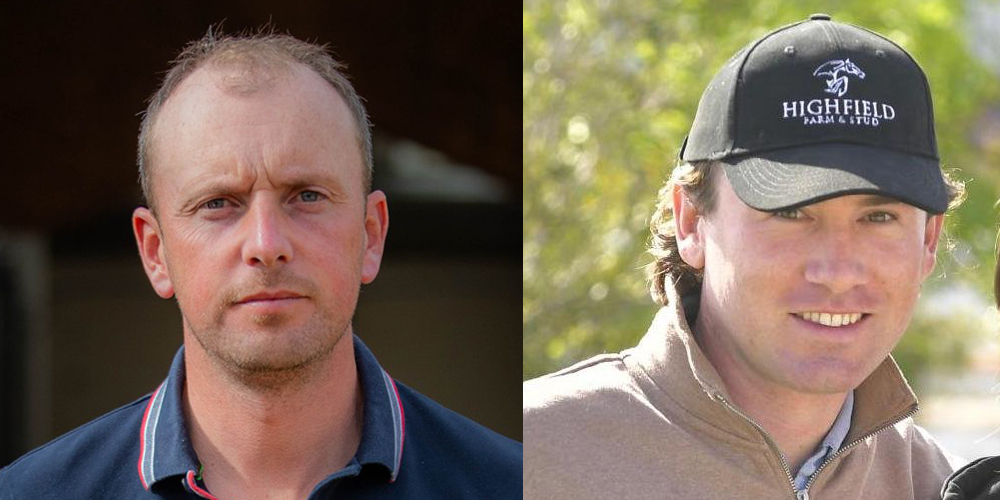
Ger O’Neill and Darragh McCarthy
“I dream up things… then I convince myself they’re possible”
– AP McCoy
Life puts obstacles in your way. Some are real, some perceived. It’s how you deal with that truth that determines your future path.
As Juliet sang to Romeo in that Dire Straits ditty, ‘What ya gonna do about it?’
People with a background in horses would not dream of taking out a licence to train in the thoroughbred industry if they paid any notice to the harbingers of doom, but undeterred youngsters like Gemma Tutty and Cian Collins are still able to make a splash.
Meanwhile, Gavin Cromwell is a bona fide powerhouse, a multiple Cheltenham championship winning trainer as well as dual Royal Ascot victor who, from being a full-time farrier in his early 40s, has built one of the biggest and most successful dual-code strings in Ireland in the past four or five years, despite the portrayal of the environment being a fallow one for anyone outside a handful.
Not too many would consider entering the stallion game either, particularly in the National Hunt sector, given the polarisation caused by the market’s slavery to fashion. For Willie Mullins and Gordon Elliott, or Aidan O’Brien and John Gosden, read Walk In The Park or Blue Bresil.
Where normal folk see danger, people like Ger O’Neill and Darragh McCarthy eye opportunity. And they didn’t just take the plunge any old time when establishing Capital Stud in Bennettsbridge, they did so during the Covid Lockdown.
They are friends of long standing from their time in the sport horse game. O’Neill is a former Nations’ Cup showjumper with a long history of performing at five-star level, who has produced three gold medal winners at the World Breeding Championships via his Castlefield Sport Horses operation. He had ridden in point-to-points in his youth and always taken an interest in thoroughbred pedigrees. When McCarthy suggested they buy a thoroughbred stallion, they didn’t overthink it and took the plunge with Hunting Horn.
“We didn’t really have any big ambitions at the start,” O’Neill details. “We said we’d put our toe in the water and see how it’s going and it’s grown wings in the last few years and is going very well.”
Four years later, Hunting Horn has been joined by flat stallions Alkumait and Castle Star and, on his jumps wing, Mirage Dancer, Triple Threat and most notably, Authorized.
In any the Venn diagram of high achievers in any sector, the thoroughbred industry included, you will find talent, knowledge, graft and a willingness to push the boat out and take a gamble in the intersection. It applies to John Magnier and Willie Mullins alike. The acquisition from the Turkish Jockey Club of the 20-year-old former Derby winner and sire of back-to-back Grand National hero Tiger Roll was a big play, but O’Neill and McCarthy wanted to be operating at the sharp end.
I Am Maximus and Readin Tommy Wrong had already added to the Grade 1 achievements of Authorized’s progeny in the middle of last season when the former Mullins-trained gelding provided the venerable stallion with another Grand National in thrilling fashion last April, the same meeting that Triple Threat’s Sans Bruit scored in the Grade 3 Red Rum Chase. But by then, the breeders were already beating down his door.
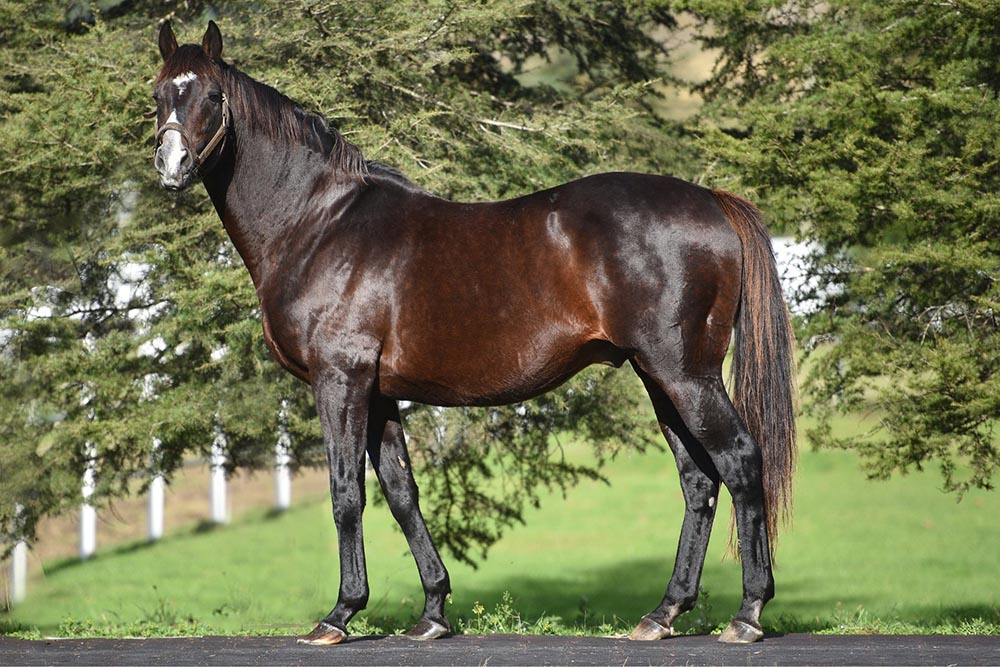
Authorized, the sire of back-to-back Grand National winners Tiger Roll and I Am Maximus.
“He has a lot of mares standing foals to him so the big pressure is off now. A lot of people wanted to use Authorized. He’s a very good stallion and a lot of the best breeders have mares in foal to him, which is great and it’ll be nice to see his foals at the sales next year.
“Buying the horse was a huge risk but the fact he’s a good few mares in foal and is going well, it’s something that I would definitely do again… we’re hoping that he’s going to have between 80 and 100 pregnancies. That’s what we’re looking for and he’s on track for doing that.
“Aintree was brilliant. The way I Am Maximus picked up and finished off to win the Grand National like that, to see himself and Tiger Roll the two highest rated Grand National winners and have the stallion in the yard, that’s what dreams are made of.”
In an interview with TDN, O’Neill said that Authorized put Capital on the map. Like a well thought-out shop display, he enticed patrons to browse and indulge in a few other treats. “He’s after bringing us to breeders that maybe we didn’t get to talk to before. And then a lot of the top breeders that come to the yard, when they see Triple Threat and Mirage Dancer, they’re using them. So he’s definitely helped us with all our stallions. A lot of people know Capital Stud now that maybe didn’t know it before. So that’s all a help. We mightn’t be on the phone if we didn’t have Authorized!”
Bloodstock agent Jerry Horan, Olympic showjumper Greg Broderick and point-to-point producer Donnchadh Doyle are some of the people that helped fund the deal. This model is something O’Neill and McCarthy are looking to develop.
“A lot of people have asked us about investing in our next stallion so it’s probably something that’s growing wings. A lot who maybe weren’t sure about getting into a stallion are approaching us and like what we’re doing. That’s a big help.
“We’d like to stand a 12 or 15-grand flat horse in the next few seasons. It’s a horse that’s needed in Ireland. And if there was a top National Hunt horse, we wouldn’t be afraid to buy another one. We are on the lookout for the next big thing all the time. The horse has to make commercial sense too, as it is a business at the end of the day.”
Doyle is also involved in Triple Threat, having liked what he had seen from a couple of expensive stores he had bought. “Triple Threat had a very good time with his runners this year. From small numbers he’s done great things. I think he had 24 runners, six of them were black-type horses, two Grade 3 winners (Sans Bruit and Mister Policeman), horses that made over €200,000. Then Donnchadh Doyle’s horse (Drop A Threat) came out and got sold to Willie Mullins after winning his point-to-point.
“It doesn’t happen too often. If he can carry that on with the number of mares that he’s covering in Ireland now, it would be unbelievable what he could do… that horse is going to be one of the busiest horses in Ireland I’d imagine.”
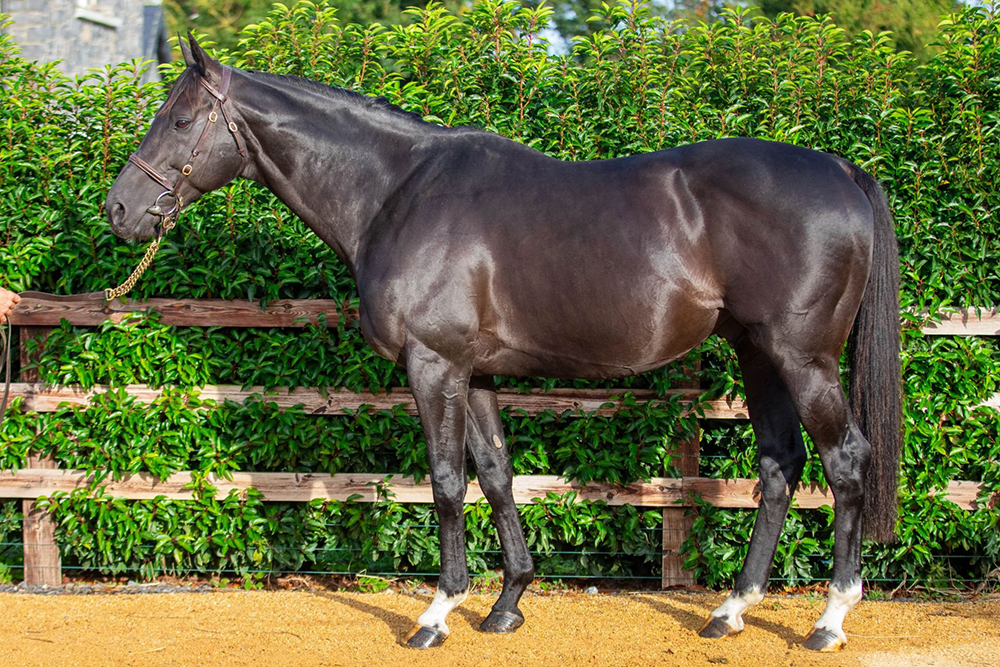
Triple Threat “is going to be one of the busiest horses in Ireland I’d imagine.”
Mirage Dancer appears to be producing the type of model coveted by the major point-to-point handlers at the stores sales. Tie that in with a page from the gods and an unsurprisingly packed appointments diary, and he looks a star in the making.
“He’s a gorgeous, big, good looking horse. He’s 16.3. He’s a great walker. He’s the pedigree to match and is a Group 1 winner by Frankel. He’s probably got one of the best pedigrees in the book. His mother won two Group 1s and is a sister to five Group 1 horses. It’s his pedigree is probably what people keep coming back to, and his physical. He’s breeding those foals that people want at the sales. They’re averaging €13-14,000 off a €3,000 cover so he’s done great things so far.
“He’s enough mares covered now. You’d like to think he’ll do very well. He’d 400 covered in his first two seasons and it looks like he’s going to cover in and around 200 again this year. He’s very popular.”
Hunting Horn will always be a special stallion for the farm, as the one that got the show on the road. “He’s going to be a little bit like Triple Threat. Those horses have to upgrade their mares and be very good stallions to make it. He’s enough mares covered in his first crop to have a chance. He’ll have 45 to 50 two-year-olds this year. He’s by Camelot, who was the sire of Sir Erec. His mother is a sister to High Chaparral, who bred Altior. High Chaparral is the sire of Karaktar, who’s the father of Il Est Francais, so I think there’s a lot in his pedigree to say that he will make a very good National Hunt sire. Time will tell. We’re going to have runners next year. A few of them will hit the track at three and we’ll see how they go.”
On the flat side, O’Neill is excited about Alkumait. “Everything that could go right for him since we bought him, has gone right. His brother (Chaldean) came out and won the Dewhurst and the Guineas and is going down very well at stud. Everyone seems to like him and he stands for 25 grand. His sister (Get Ahead) sold for 2.5 million (guineas).
“He’s covered a nice book of mares, more in his second season than his first, which is unusual. But everybody loved his foals and they sold really well. Nineteen of his twenty foals sold up in Goffs. For a horse at the bottom end of the flat, it’s very important for people that they can sell their stock and make some money, so it was very good that they did.”
Castle Star is the newcomer. “He’s going well. We think he’s going to cover around 100 mares. It’s a little more difficult this year I think. The foal sales have been harder so, for any of the cheaper, five-grand stallions, it is a harder time to do it. But even in the last few weeks, look at how many horses are going well by (his sire) Starspangledbanner.
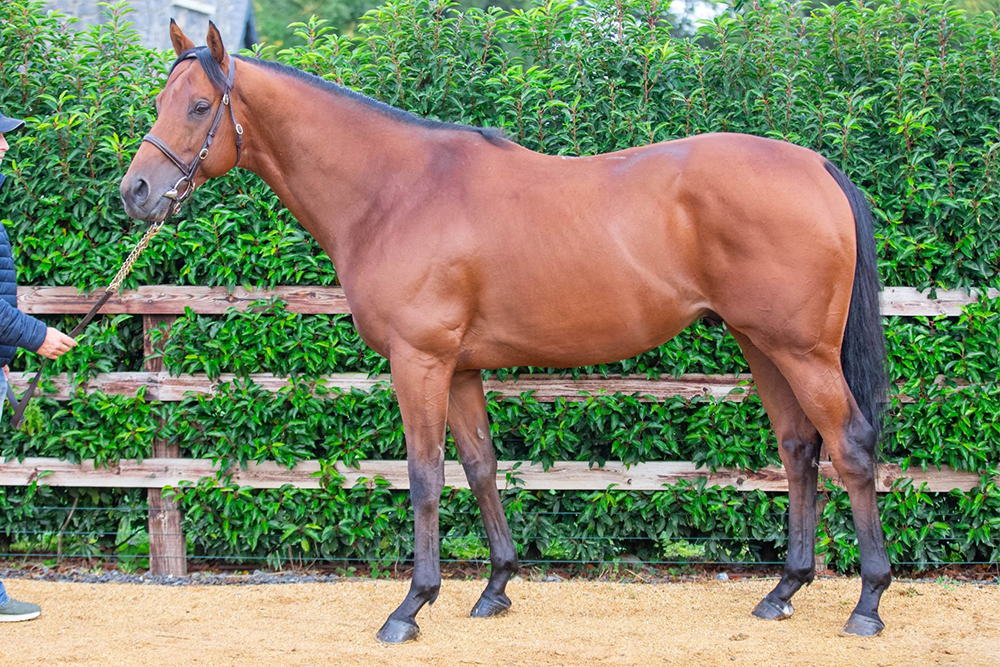
Castle Star was only beaten half a length by Perfect Power in the Middle Park Stakes after a slow start and meeting trouble in running.
“Castle Star was an unbelievably fast two-year-old and then he got a displaced colon, which was a pity. He was only just touched off to win his Group 1 (finishing runner-up in the Middle Park Stakes after a slow start). If he’d won it, he mightn’t have been accessible, he’d have been standing somewhere for 15 or 20 grand. So I think he’s a very good option for breeders.
“The Wow Signal (another Starspangledbanner) had unbelievable results from a small crop. He wasn’t fertile but he did unbelievably well. There’s no real sons of Starspangledbanner standing that ran over five or six furlongs so I think he could take his chance really well.”
O’Neill and McCarthy aren’t ones to sit around waiting for things to happen. In The Irish Field, McCarthy has spoken about the need for a lucrative race series to encourage NH breeders to use cheaper stallions so they have a change of going racing with stock they cannot sell and still make it pay. He has even mooted building a racecourse based on the American model of ploughing all profits into prize money to do the same. Because right now, the results on the racecourse are not matching what’s happening in the auction house. While the NH buyers are obsessed with three or four stallions, the facts are that 21 different sires were responsible for the 27 winners at Cheltenham last March.
Martin Stevens, of this parish and elsewhere, pointed out in his Racing Post column that the 76 Grade 1 races on the British and Irish calendars in the 2023/24 season were won by horses sired by 40 different stallions.
“Look at JJ Bowe last year; he bought that beautiful big Doyen filly (Echoing Silence for €28,000) and got very well paid for her (£410,000). I think that’s very important. People buying the three-year-olds, if you want to buy the fancy one, it’s going to cost you a hundred thousand but if you use your imagination, a better horse might be beside him available for thirty grand and that’s a good thing for the industry rather than a bad thing, if that makes sense.”
Comparisons are often made with France in terms of the depth of stallions but it isn’t a fair one, given the yawning gap in prize money. That’s why McCarthy and O’Neill are coming up with some of the aforementioned ideas they feel might lead to a healthier industry.
“We are very commercial here. Looking from a sales point of view, most of the people that come to breed with us are gonna sell their foals at the sale. If they breed a racehorse that they can’t sell as a foal, that’s nice if they get to watch it but it won’t be profitable. So it would be nice if that could be in some way addressed. It’s a difficult thing to sort out, but there should be more for the breeder that’s breeding a racehorse.
“One day, we went down to Willie Mullins’ to see Mister Policeman and (fellow Triple Threat offspring) Icare Desbois and, when you see the different models that come in – they’re all Grade 1 winners. They’re not all that big Derby Sale-type horse. Lossiemouth went past me and you wouldn’t believe it was her. She was a little bit of a thing. If she was going through the sales ring, she wouldn’t make a fortune as a young mare.
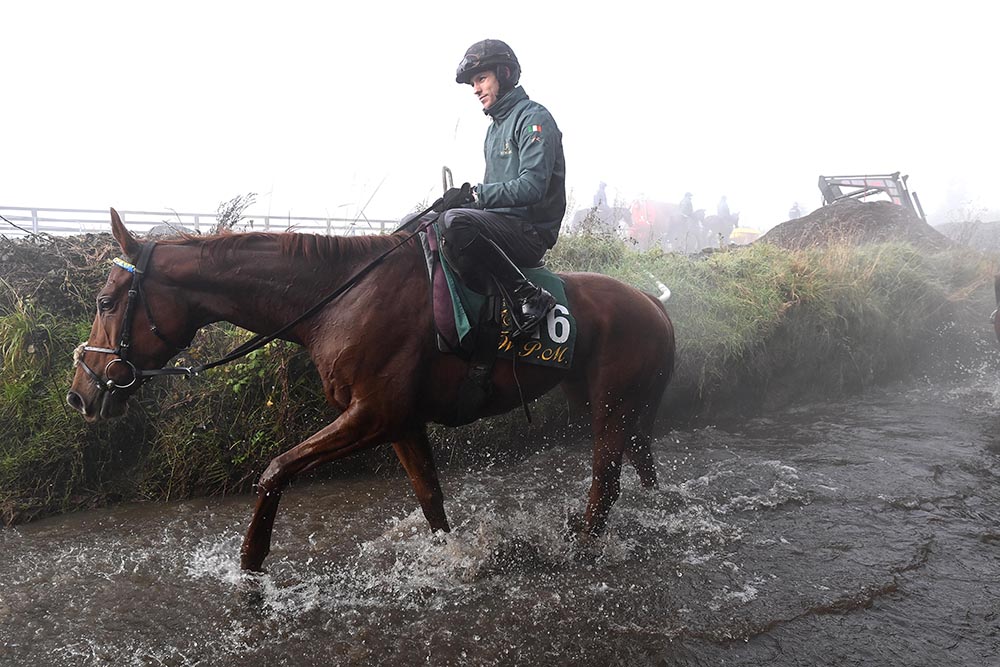
Triple Threat’s Gr.3-winning novice chaser, Mister Policeman enjoyes a cooling stroll at Willie Mullins’ Closutton yard.
“There has been a lot of talk about three-year-old races that will be run here and I think that would change the model of horse people are trying to buy. At the minute, when you’re trying to buy a four-year-old that’s strong enough to carry 12 stone over three miles in the muck, it’s a different horse to what you’d need that could run at three and be ready to run over hurdles at two miles. That would probably help the lesser stallions, that you can breed a horse that’s for the market earlier.
“In the end, the people that are buying foals will want to sell two-year-olds and if they could sell two-year-olds instead of three-year-olds, they’ll have a year less. Whether it happens now or in the next three or four years, that will happen and the market will change for that.”
The operation wouldn’t run without the endeavours of head stallion man Joe Sinnott, Eoin Heafy, who is second stallion man, and Sinéad Madden. “They do the work of three teams,” says an appreciative O’Neill.
The rewards have been coming but nobody is resting on any laurels here. The search for the next rung of the ladder is constant. “A stallion has to have something the market is going to require. The physical is very important for the National Hunt horses. When people come in to see Mirage Dancer, they are blown away by the model. If he was 16 hands, he wouldn’t cover anything like the same number of mares.
“It’s such a competitive market and there’s so many good people doing it, we just have to keep upgrading every year to be better and better. That’s why to be able to bring in something like Authorized, who’s a household name already, is important. People that have a foal by Authorized are going to get paid. We just have to keep upping it now and making it better.”
On the evidence to date, you wouldn’t bet against it.
New advertised stallions for 2025
Click on any of the new stallions below to go straight to their records

Click below to buy the 2025 book.
Why Advertise Your Stallion
Each Advertised Stallion comprises:
An Overview • Stud Record • Sales Record • Race Record • Pedigree Record
